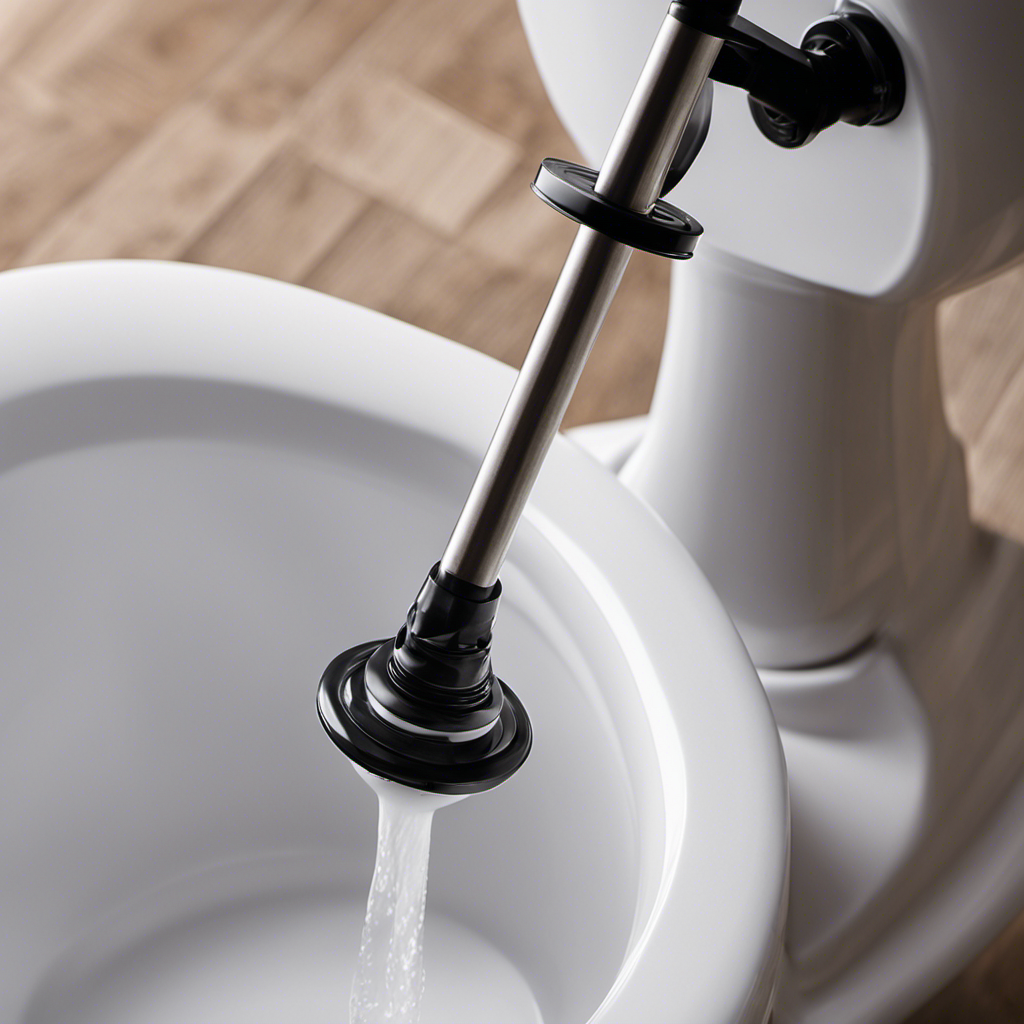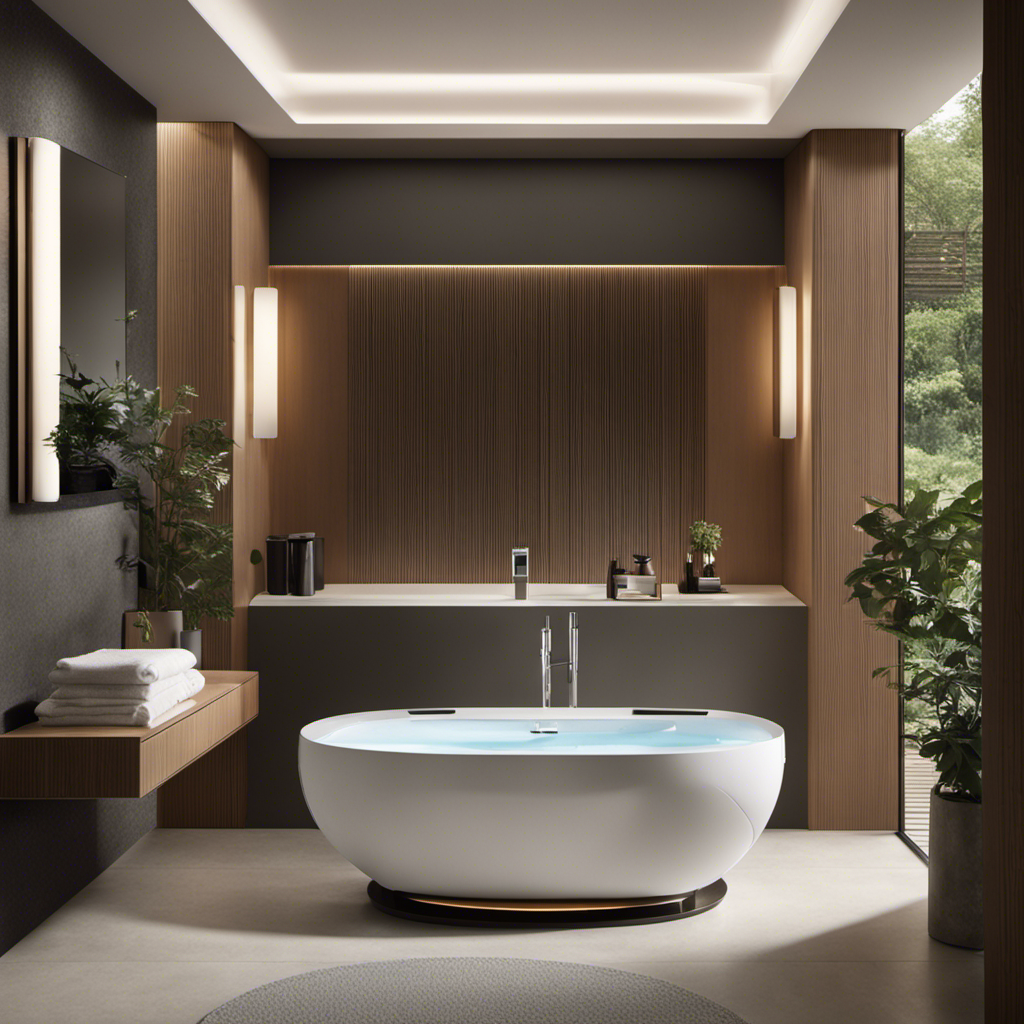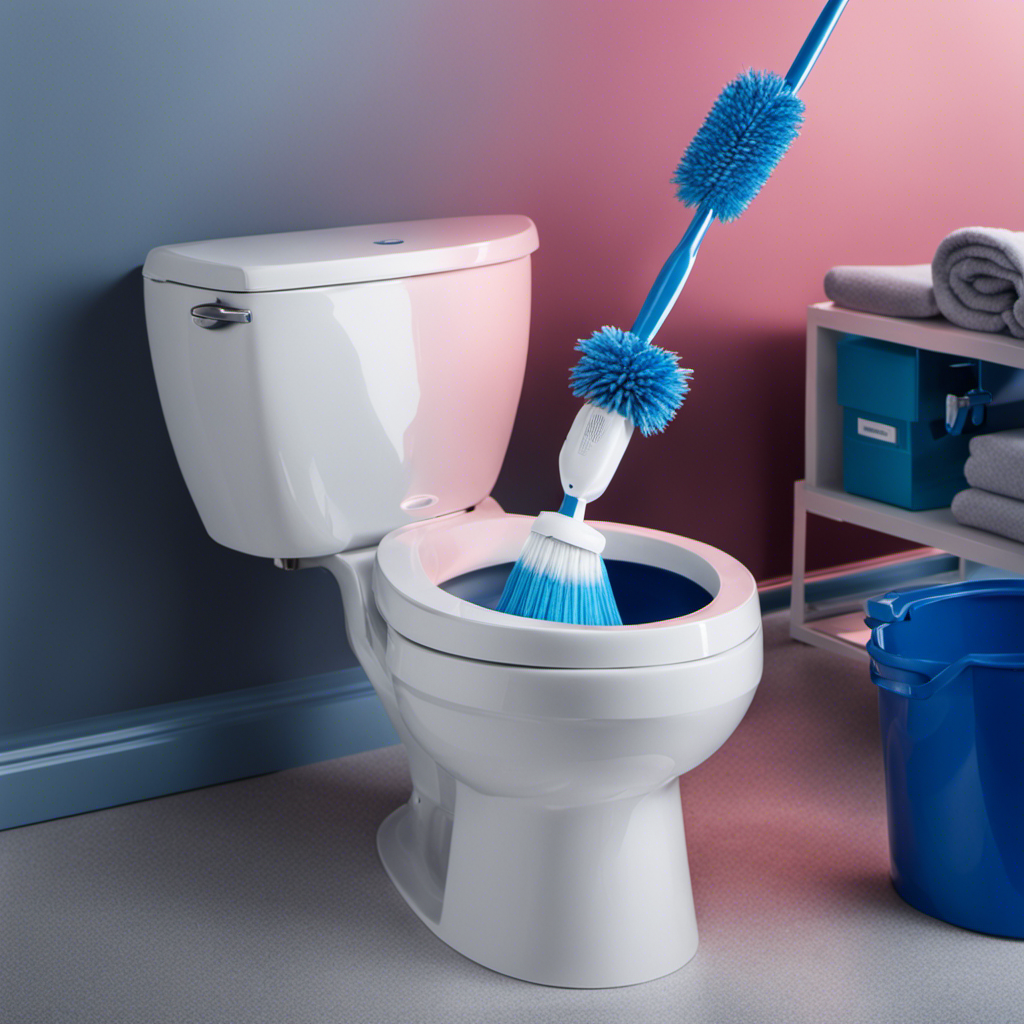I’ll show you how to unclog a toilet using a plunger.
Did you know that over 80% of toilet clogs can be fixed with a simple plunger?
In this step-by-step guide, I’ll explain the different types of plungers and how to use them effectively.
I’ll also share common mistakes to avoid and offer tips for a more successful plunging experience.
If you don’t have a plunger on hand, don’t worry – I’ll cover alternative methods too.
Let’s get started!
Key Takeaways
- Cup plungers and flange plungers are the two main types of plungers for unclogging toilets.
- Cup plungers work well for most clogs, while flange plungers are specifically designed for toilets and provide better sealing.
- When using a plunger, it is important to create a tight seal by pressing the plunger firmly against the drain hole.
- Regular maintenance, avoiding flushing non-flushable items, and using enough water can help prevent clogs.
Types of Plungers for Unclogging a Toilet
There are two main types of plungers for unclogging a toilet: the cup plunger and the flange plunger.
The cup plunger, also known as the standard plunger, is the most common type. It has a flat bottom with a round cup-shaped rubber head. The cup plunger is effective for unclogging toilets as well as sinks and tubs.
On the other hand, the flange plunger, also called the toilet plunger, is specifically designed for unclogging toilets. It has an extended rubber flange, or collar, around the cup, which creates a better seal in the toilet bowl.
When choosing the right plunger for your toilet, consider the type of clog and the shape of your toilet drain. Cup plungers work well for most clogs, while flange plungers are more suitable for toilets.
Step-By-Step Guide on Using a Plunger to Unclog a Toilet
Start by making sure you have a sturdy plunger on hand for this step-by-step guide on using it to clear a clogged toilet. Here’s how to do it:
-
Position the plunger: Place the plunger over the drain hole at the bottom of the toilet bowl. Make sure it covers the entire opening.
-
Create a seal: Press the plunger firmly against the drain hole to create a tight seal. This will allow for better suction.
-
Apply pressure: Push the plunger up and down vigorously, using your body weight to generate force. This action will create suction and dislodge the clog.
By following these steps, you can effectively use a plunger to unclog your toilet. However, it’s important to note that prevention is key to avoiding toilet clogs. Regular maintenance and avoiding flushing non-flushable items can help prevent clogs in the first place.
Now, let’s move on to the common mistakes to avoid when using a plunger.
Common Mistakes to Avoid When Using a Plunger
To effectively clear a clog, make sure you press the plunger firmly against the drain hole to create a tight seal. This will ensure that the pressure you apply is focused on dislodging the blockage.
However, it’s important to note that proper maintenance can help prevent toilet clogs in the first place. Regularly flushing with enough water and avoiding flushing items that can cause blockages, such as excessive toilet paper or non-flushable items, can go a long way in maintaining a clear drain.
Additionally, choosing the right plunger for your toilet is crucial. Look for a plunger with a flange, as it is specifically designed for toilets and creates a better seal.
Tips and Tricks for a More Effective Plunging Experience
Using a plunger with a flange can greatly improve your plunging experience. Here are some tips and tricks to make your plunging more effective:
-
Plunger maintenance and care:
- Clean your plunger after each use to prevent the spread of bacteria.
- Check the rubber suction cup for any cracks or damage before using.
- Store your plunger in a dry place to avoid mold or mildew growth.
-
Troubleshooting common issues with plunging:
- If the water level is too low, add some water to create a better seal.
- Push down firmly and forcefully, then pull up quickly to create suction.
- Repeat the plunging motion several times to dislodge the clog.
Alternative Methods for Unclogging a Toilet Without a Plunger
You can try using a mixture of hot water and dish soap to help break up the clog in your toilet. First, gather a bucket of hot water and add a generous amount of dish soap to it. Make sure the water is not boiling, as it can crack the toilet bowl.
Slowly pour the mixture into the toilet bowl and let it sit for a few minutes. The hot water and soap combination will work to loosen the clog.
If this method doesn’t work, you can try using a toilet snake. A toilet snake is a long, flexible tool that can be inserted into the toilet drain to push or pull out the clog.
Another alternative method is the vinegar and baking soda method. Simply pour a cup of vinegar into the toilet bowl, followed by a cup of baking soda. Let the mixture sit for a few minutes and then flush the toilet. The chemical reaction between the vinegar and baking soda can help break up the clog.
Frequently Asked Questions
Can I Use a Plunger to Unclog a Sink or Bathtub?
Yes, you can use a plunger to unclog a sink or bathtub. It creates suction that helps dislodge blockages. If you’re looking for alternatives, you can try using a drain snake or a mixture of baking soda and vinegar.
How Long Does It Typically Take to Unclog a Toilet Using a Plunger?
When using a plunger to unclog a toilet, the time it takes can vary depending on the severity of the clog. It’s important to know how to properly use a plunger and avoid common mistakes to ensure effective results.
Are There Any Safety Precautions I Should Take When Using a Plunger?
When using a plunger to unclog a toilet, it’s important to prioritize safety. Always wear gloves and avoid using excessive force. Remember to position the plunger properly and use a steady, controlled motion to effectively clear the clog.
Can I Use a Plunger if My Toilet Is Still Overflowing?
If my toilet is still overflowing, using a plunger may not be effective. Instead, I can try using other plunger alternatives like a toilet auger or calling a professional plumber to deal with the issue.
What Are Some Signs That I May Need to Call a Professional Plumber Instead of Using a Plunger?
If you notice signs of severe blockage, such as multiple clogs or slow draining in multiple fixtures, it may be time to call a professional plumber. They have the expertise to handle more complex issues that a plunger can’t fix.
Conclusion
In conclusion, unclogging a toilet with a plunger is a simple and effective method that anyone can master. By following the step-by-step guide and avoiding common mistakes, you can quickly resolve any clogging issues.
Remember to choose the right type of plunger for your toilet and use the proper technique for optimal results. And if you find yourself without a plunger, don’t worry! There are alternative methods available to tackle the problem.
So next time you encounter a clogged toilet, you’ll be prepared to handle it with ease.










